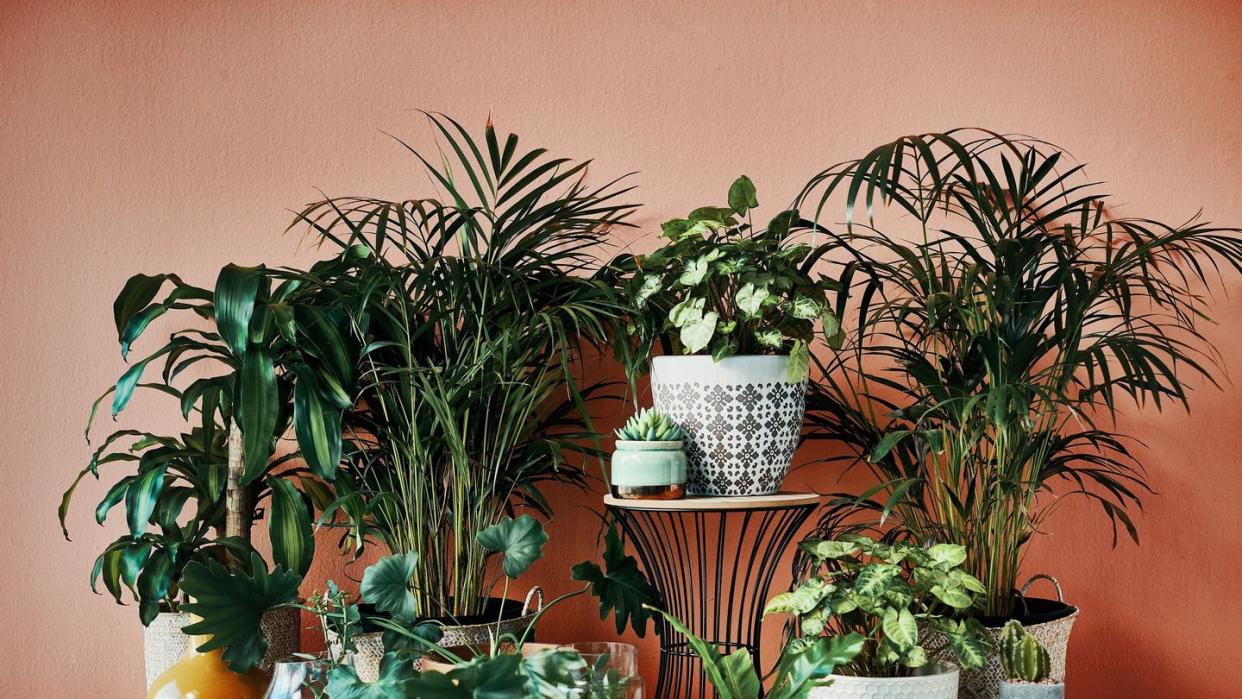What Is the Difference Between Potting Mix and Potting Soil?

[table-of-contents] stripped
Houseplants are a great way to breathe life and energy into your space, not to mention that they improve your indoor air quality. But crispy leaves and wilting stems aren't exactly aesthetically pleasing. And if you've followed the care guide down to the letter—tweaking sunlight exposure and scheduling waterings—but still can't seem to keep your plants happy and healthy, you may be using the wrong kind of soil. While the terms potting soil and potting mix get used interchangeably for soil that's used with indoor plants, they're actually very different things. Depending on your environment and the plants you care for, choosing the right one could make all the difference. Wondering what is the difference between potting soil and potting mix? Read on for all the details, along with tips and tricks on when to use each one.
What Is Potting Soil?
Potting soil is just that: soil specially designed with elements needed for plants, whether in pots or gardens. Soil is usually heavy and dense and made for the ground rather than assisting the houseplants it's used in with drainage. It may contain fungi or weed seeds. Potting soil should be refreshed once a year, usually after the winter frost as you're resetting your garden and promoting new growth.
Uses of Potting Soil
Potting soil is most commonly used outdoors for landscaping. Soil is also what you would mix with compost and fertilizer. Bagged soils are often mixed with compost to improve their nutritional value, which makes them ideal for outdoor use in vegetable gardens and flower beds to revive them after the winter.
Common Ingredients of Potting Soil
Soil
Peat moss
Pearlite
Wetting agent
Fertilizer
What Is Potting Mix?
Potting mix doesn't actually contain any soil or dirt at all. It's a common misconception (often the result of confusing branding), but potting mix consists of organic matter and fertilizer along with pearlite or some drainage aid. Potting mix is commonly lighter and has better drainage and aeration than standard potting soil. It's also sterile, so you can be sure it won't introduce any fungi or weeds. However, because it's not soil, you'll want to replace it (i.e., repot your houseplants with fresh mix) every six to eight months.
Uses of Potting Mix
Potting mix is used to pot and grow any indoor houseplant (unless its care guide specifically indicates that you should use soil).
Common Ingredients of Potting Mix
Organic matter
Fertilizer
Pearlite
Peat moss
Types of Potting Mixes
Different potting mixes cater to different plants' drainage and pH needs.
Moisture-Control Potting Mix
For plants that need less drainage or assistance with controlling their water retention, like some humidity-loving plants, a moisture-control potting mix is ideal. These types of mixes help to retain and soak up water for longer-lasting moisture.
Succulent or Cacti Potting Mix
On the other end of the watering spectrum are succulent-specific potting mixes. These mixes contain a higher ratio of pearlite and sand to potting soil and help water drain faster.
Organic Potting Mix
You might think all potting mixes are organic, but a lot of them contain chemical compounds or elements that can be very helpful for finicky plants like orchids or fiddle leaf fig trees. Organic potting mix is more expensive, but it's better for the environment and more natural for your plants. The Organic Materials Review Institute is the organization that sets the organic production standards for organic potting mixes and soils, so keep an eye out for this certification when shopping.
You Might Also Like

